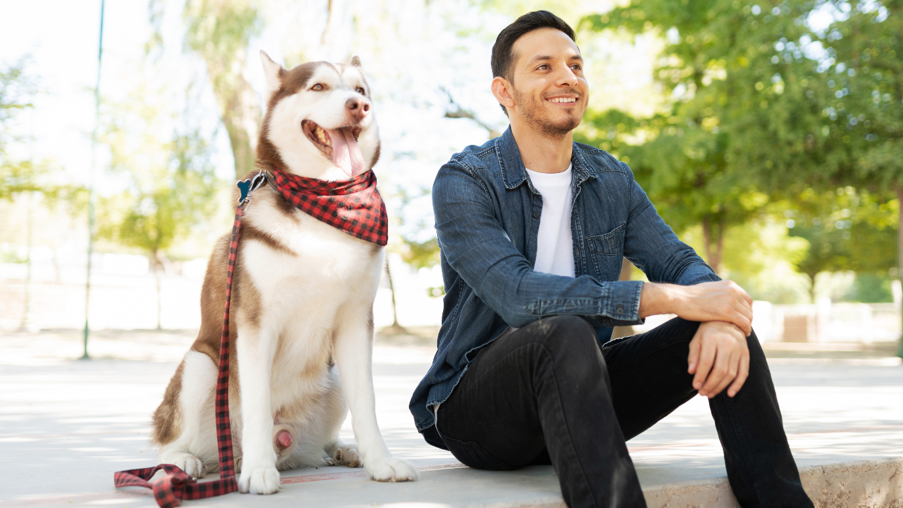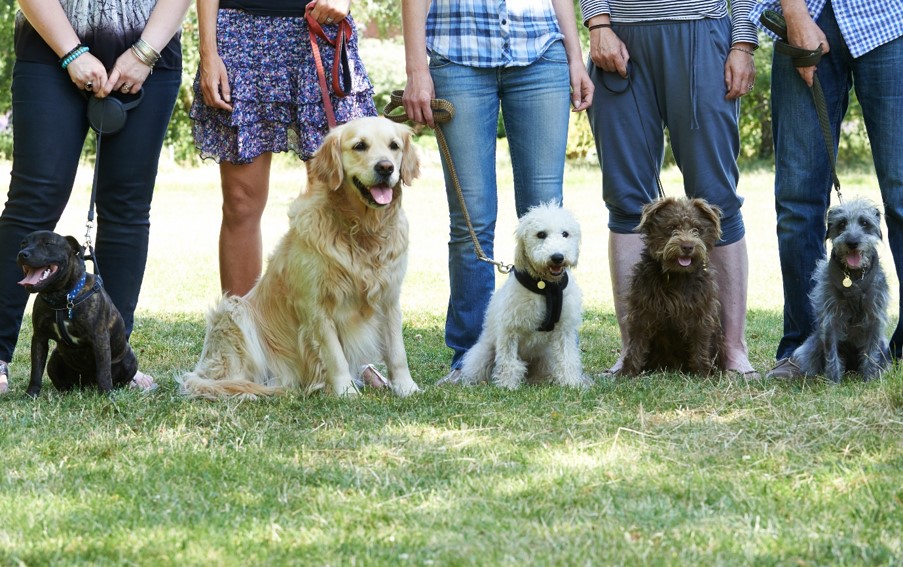How to train a dog by Karen
Before we investigate ideal scenarios on how to train a dog, we ought to think about why we need to train and what we want them to learn.
Although dogs are amazing creatures and slot so easily into our lives, we must keep in mind that they need to be taught how to live in our modern human world.
So, one aspect of their learning is to be able to deal with human stuff; all dogs need to be trained in ‘life skills’. It is sometimes also necessary to ask dogs to do something immediate and specific – sit calmly while this pushchair goes by or ‘come here’ as that situation over there is not safe, or ‘don’t touch’ that pile of chicken bones that has been left on the pavement. This is another aspect of their learning; ‘formal’ training where we teach them to respond to cues.
.png)
Does it matter what words we use?
The terminology we use when training dogs can influence how owners perceive it. Some people talk about dogs 'doing what they are told' and 'obeying commands', but these types of phrases imply that the dog is a little robot and will always do exactly what we say.
The reality is that we share our lives with a sentient, feeling creature who has his agenda, wants and needs and very often these are different from ours!
If owners expect that their dog should be ‘obedient’ at all times then this clash of needs can cause difficulties in their relationship and often ends in owners becoming frustrated and angry, and dogs becoming anxious, stressed and discouraged. If owners can move away from the ‘obedience training’ ethos and think of themselves as their dog’s teacher, then there would be more flexibility and less pressure in the relationship.
What’s the best approach to dog training?
As well as what words we use, having an impact on training, how we do it is so very important. Research into dogs and how they learn has led to incredible advances in training but unfortunately, a lot of owners are still stuck in the old-fashioned training methods of the seventies and eighties. These methods are based on dominance and force – owners are told that they must be the 'pack leader' or to be 'in charge'.
This way of training causes major problems for dogs as they are not plotting to take over the household and do not understand the aggressive, confusing way their owners are interacting with them. Modern training methods now use force-free teaching and positive reinforcement.

It has been said many times that positive does not equal permissive! Using this method of training means that the dog is still going to have boundaries and understand how to live in our world, but it is done in a way that does not compromise welfare or damage the relationship, encourages the dog to want to learn and makes everyone involved feel good.
All dogs must be taught everything they need to know by using force-free training. This means not doing anything that the dog could find scary, threatening or upsetting. No pushing on their rump until they sit, no jerking on the lead if they pull, no shouting at them until they do a ‘stay’. Instead, by rewarding behaviours that we like and ignoring behaviours that we don’t like we can teach our dogs what we want them to do in a way that is kind, respectful and humane. Training in this positive way means that the dog is going to develop confidence and will learn to think for itself. It is very useful if the dog can work out for itself what behaviours are required in which contexts, instead of having to constantly keep telling the dog what to do.
How do dogs learn?
A lot of people think that their dog always wants to please them and understands everything they say – Lassie has a lot to answer for!
Dogs are highly intelligent and quick at working out what's going on in specific situations. However, they are also basically simple creatures – they just do what works for them.
This means they do whatever gets them what they want at that time. If certain behaviour does get them what they want, they will continue to do it. If it doesn’t work and they don’t get what they want, then they won't do that particular behaviour again and instead, they will look for another way to get what they want. Therefore, if you can combine what the dog wants with what you want, then everyone is happy.

It’s also really important to remember that every interaction you have with your dog teaches them something. You just need to make sure it is what you want them to learn! If the dog is barking for attention when you are on the phone so you stroke him to keep him quiet, then your dog will remember that barking works (it gets him what he wants), so he’ll bark again in the future.
Some dogs are so clever that they will work out that is only when you are on the phone that barking works! Therefore, consistency is a key requirement for dog training. You must be consistent, both in what you expect from the dog and how you behave.
So what’s involved in dog training?
A particularly useful training tool is the clicker, which is a way of marking exactly what the dog has done to earn the reward. There are also many ways to teach behaviours to our dogs – luring, capturing, shaping – and many ways of timing the rewards to give the maximum impact. With so much to think about, and as it is so important to get it right, every dog should go to a training class.

Classes also help the dog to generalise behaviours (dogs sit perfectly in the kitchen but will they do it on a walk?) and to learn to pay attention to the owner in the most distracting of environments. Even dog trainers and behaviourists take their puppies to training classes! However, it is important to find the right class, so before you commit to one, ask the trainer if you can go (without your dog) and watch a class.
Any good trainer will let you (covid situation excepted!) You need to get a feel for how the class is run; do the owners and dogs look happy? Does everyone understand what is going on, and is this something you want to do with your dog?
Be a dog trainer!
A dog training class must be run by a well-qualified and reputable trainer who needs to be experienced in reading dog body language, must understand the developmental periods of dogs, must know how dogs learn and are up-to-date with modern research. As well as in-depth knowledge of dogs, trainers must be able to relate to people, be good communicators and have an awareness of human learning styles. There is a lot involved in becoming a dog trainer! It is a very rewarding career though, so well worth the effort involved. Professional dog trainers must belong to a reputable professional body and therefore must have a recognised qualification.
Our dog training courses will teach you everything you need to know about dog behaviour and training; some teach the essential business requirements and skills needed to set up a business and plan training classes.
These courses are very comprehensive and are also studied by those who want to become dog behaviourists as well as provide other career options for working with dogs.
Some of our dog courses will also benefit owners who want to understand more about their dogs, including how to train them and live with them in the best relationship possible.
Dogs are such wonderful animals, fitting into our lives and asking so little in return. Most dog behaviour problems arise from a lack of understanding; if we can prevent this by training and learning more about our faithful companions, then surely that can only be a good thing!
Visit our course pages to read more on our canine courses. Or if its Canine Behaviour that really peaks your interest, then we recommend reading up on our Ofqual regulated Level 3 Diploma in Canine Care, Behaviour and Welfare qualification here.
Also, if you adore animals, you can keep track of all upcoming animal awareness days and events with our FREE calendar! Download it here.
















